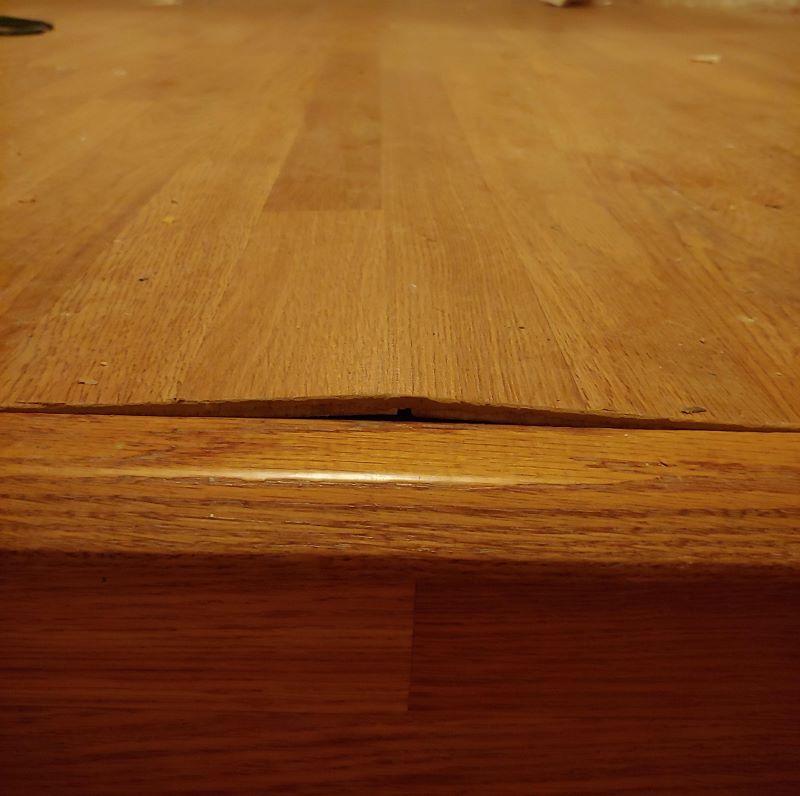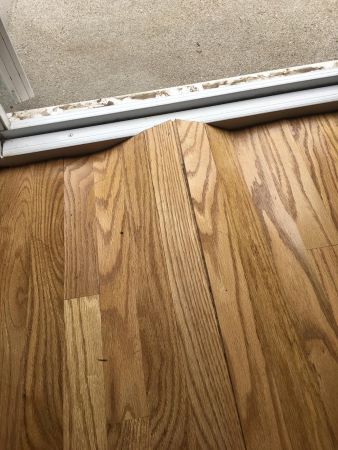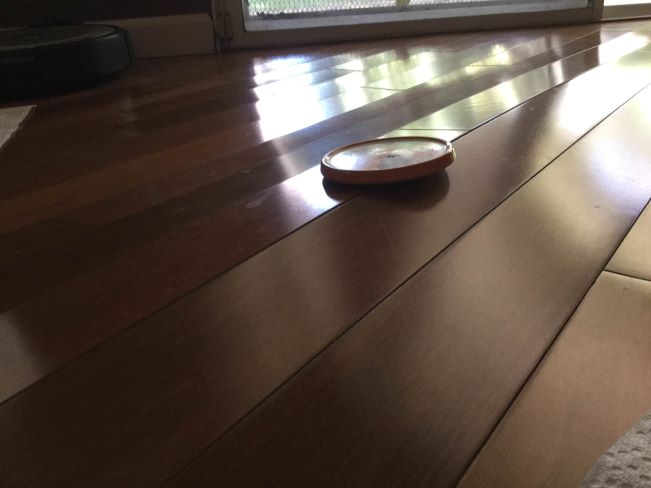Like the most bothersome issues, buckling in laminate floors seems to almost happen overnight. One moment, all seems right with your laminate floor and the next, it seems to be doing its very best to defy gravity.
What could be the cause of that unwelcome rise right in the middle of your living room floor? Can it be rectified? If so, how to fix buckling in laminate floors?
We’ll discuss in detail each of these questions along with preventing buckling in laminate floors.
What Is Laminate Floor Buckling?
Laminate floor buckling is a condition that causes laminate floors to take on an uneven appearance due to their planks seeming to lift and split. This results in raised ridges at specific points on affected laminate floors.

Why Do Laminate Floors Buckle?
Moisture and changes in temperature are two of the main causes of buckling in laminate floors. Quite often, the problems they cause in this regard could be as a result of the following issues:
1. Failure to clean spills on time
Although laminate flooring may possess some moisture resistance, it is not completely moisture-proof. Hence any spills should be cleaned promptly. Leaving any spills for long periods could result in moisture seeping between the floor planks, damaging them as a result.
2. Inappropriate cleaning methods
Laminate flooring is not meant to be cleaned with copious amounts of water or with a steam mop. Doing so will ensure moisture can reach the core of the planks and cause damage to them.
3. Lack of a moisture barrier
This is especially the case when installing flooring over a concrete surface. This subflooring secretes moisture over time which can affect the laminate flooring installed over it, resulting in swelling in the planks.
4. Lack of expansion gaps
Laminate floors tend to contract during colder weather and expand during warmer weather. As a result, it is important to leave expansion gaps during the installment process to accommodate such changes. Failure to do so will result in buckling when floor planks expand against each other in the absence of sufficient room for their new sizes.
5. Installing the wrong type of flooring
Not all laminate floors are suitable for rooms exposed to a great deal of moisture (such as kitchens, mudrooms, and bathrooms). Using the wrong variety which is especially susceptible to water can result in buckling.
6. Failure to acclimatize flooring
Like hardwood and vinyl flooring, you need to acclimatize laminate flooring so that it can adjust to the temperature and moisture levels of its surroundings.
To do so, you will need to leave the flooring in its packaging, lying flat on the floor for a minimum of 48 hours, in the room it is to be installed in.
How To Fix Buckling In Laminate Floors?
Buckling in laminate floors can be fixed. However, different measures may be required depending on the nature and the extent of the damage.
As a result, you will need to take the following steps:
1. Ascertain the source of the moisture
You will need to first ensure that the buckling is not being caused by leakage of some sort. For example, if the flooring surface in your kitchen happens to be affected, you will need to ensure that it is not a result of any leaking pipes or appliances.
If you happen to have a concrete subfloor, you will need to ensure that a vapor barrier has been installed to protect your laminate planks from any moisture which may seep through the concrete.
You will also need to wipe any spills which may have been left unattended.
Once you have done so you will need to switch on your dehumidifiers. However, it is worth noting that while dehumidifying the affected area may resolve the issue if it happens to be minor, you may need to implement one or more of the following steps presented below in the event of the damage being somewhat more extensive.
2. Replace part of your floor
If a relatively small part of your floor happens to be affected, you will need to remove the damaged portion by implementing the following steps:
- Remove the molding closest to the part of the floor which needs to be replaced.
- Remove the tongue of each plank from the groove of the one closest to it, and then remove the segment of laminate flooring. (This should be repeated until you get to the damaged part of the floor, and you should discard any planks which happen to be damaged.)
- Replace the damaged planks with boards from the new batch, locking them as you proceed to the molding (simply locking in any planks you have retained to their former position as well). Special care should be taken to ensure that an expansion gap is left to prevent buckling in the future.
- Tap the planks with a hammer and a wood block to ensure they are firmly set.
- Replace the molding.
It is also possible to saw off the affected part using a circular saw and tape, however, this method is somewhat more complex and may require the services of a professional.
The possibility of having to replace part of your floor means that ordering surplus quantities is always recommended. If not, you may have to order another batch if possible.
3. Provide an expansion gap
If the issue is caused by the lack of an expansion gap, you will need to remove the molding. You will also have to create the gap using spacers and cutting out part of the floor close to the walls. The minimum recommended size for an expansion gap is a quarter of an inch. Also, make sure that the expansion gaps left when installing your floor aren’t too big.
The molding will need to be replaced following the procedure.
How To Prevent Buckling In Laminate Floors?
Unlike hardwood flooring, laminate flooring cannot be sanded. It will also not return to its original state when dried in the event of sustaining significant water damage. As a result, taking special precautions to protect your floor is rather important. Here are how you will be able to do so:
1. React promptly to spills
Any spills should be promptly cleaned up. If necessary, you may need to use a wet-dry vacuum to ensure as much water as possible is removed from the seams.
2. Check plumbing and appliances regularly
If you have installed laminate flooring in kitchens or bathrooms, you will need to regularly check the plumbing in those rooms to ensure it is in peak condition. Potential problem spots such as toilets, sinks, and heaters should be inspected closely.
You will also need to inspect your appliances as well, to ensure none of them happens to be leaking, constituting a buckling hazard as a result.
3. Opt for other flooring surfaces where possible
Although laminate flooring is more water-resistant than hardwood, it is by no means waterproof.
Hence, installing it in rooms where spills and leakages are more likely to occur, will significantly increase the risk of buckling.
As a result, opting for waterproof options where possible is highly recommended. It is actually possible to obtain high-quality vinyl flooring which will enhance the esthetic quality of your kitchen, shower room, and mudroom.
4. Choose the right kind of flooring
If you are intent on installing laminate flooring in rooms where a great deal of water is used, you will need to ensure you select a water-resistant variety.
You will also need to take special care during installation to ensure that the seams are as tight as possible.
It may also be possible for you to use a polyurethane laminate floor sealant for the entire floor.
However, it is also worth noting that doing so may actually void your warranty and so you will need to pay close attention to the manufacturer’s stipulations in this regard before proceeding with this step.






